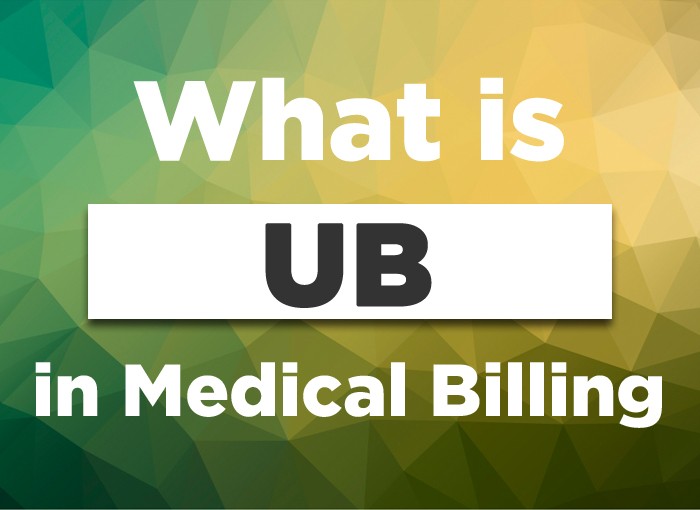What does UB stand for in Medical Billing
The basic form that is used in medical billing is referred to as the UB which stands for Uniform Billing. As the name suggests, it is a standard process where the medical billing would be uniform for almost all insurance reimbursements. When UB is mentioned, it means using the same layout for health care providers, insurance companies, and others involved when charging fees for medical services. This involves an easier claims process, less chance for discrepancies, and faster reimbursement for medical practitioners and facilities.
Historical Evolution of UB Forms
- UB-82: The original uniform billing form introduced in 1982
- UB-92: Implemented in 1992, adding more fields and improving clarity
- UB-04: The current version introduced in 2007, featuring expanded capabilities and electronic submission options
The UB-04 Form in Detail
The UB-04 (CMS 1450) form replaced the old UB-92 form in 2007. The CMS established UB-04 so as to simplify the controversies in billed claims that arose out of non-uniformity in billing. In front of that thought, new fields were integrated into UB-04 enveloping the entire necessary data required to bill insurance payers.
The UB-04 is printed with “red ink” on standard white paper. However, nowadays, hospitals are switching to the electronic version of UB-04 for convenience.
Physical Characteristics
- Printed with distinct red ink on white paper
- Standard size: 8.5 x 11 inches
- Machine-readable format
- Contains specific alignment markers for automated processing
- Available in both paper and electronic formats
Key Components of the UB-04 Form
The UB-04 form comprises 81 Form Locators (FLs), each dedicated to specific data. Below are the key components:
1. Patient Information:
- FL 8: Patient’s name, date of birth, and gender.
- FL 10: Patient’s admission date and time.
- FL 12-15: Type and source of admission, including whether it was an emergency or elective service.
2. Insurance and Billing Information:
- FL 50-65: Insurance company details, including policyholder information, group number, and plan codes.
- FL 18-28: Condition codes, accident information, and employment details (if relevant).
3. Service Details:
- FL 42-49: Revenue codes describing the services furnished, inclusive of laboratory assessments, radiology, or surgical techniques.
- FL 66-75: Diagnosis codes (ICD-10) and system codes (CPT/HCPCS).
- FL 80: Remarks or additional comments for clarification of claims.
4. Provider Information:
- FL 56: National Provider Identifier (NPI) of the billing provider.
- FL 76-79: Attending, operating, and other relevant provider details.
5. Financial and Tax Details:
- FL 39-41: Value codes for charges and benefits.
- FL 81: Taxonomy codes representing the provider’s specialization.
Required Documentation
To complete a UB-04 form accurately, you need:
- Patient demographics and insurance information
- Complete medical records
- Valid diagnosis and procedure codes
- Provider credentials and facility information
- Service dates and detailed charge information
Tips to Avoid Denials
The long list of form locators in the UB-04 form is quite daunting and filling such a long form requires a lot of concentration along with the correction information. Turning in the incorrectly filled form may result in denials. Therefore, while billing the forms, the biller must go through the UB-04 form to cross-check the available information for each field. Here are a few tips to help you avoid any denials.
- Verification: Before filling out the form make sure to verify the required information with the insurance payer.
- Fill in Correct Details: If you are submitting the paper version of the UB-04 form then make sure to fill in the details correctly. There’s no scope for reviewing the form and correcting any mistakes. However, it is advisable to switch to the electronic UB-04 to avoid any mistakes.
- Insurance Information: Write the patient’s name the way it appears on the insurance card.
- Correct Codes: It is important to mention the correct CPT/HCPCS codes using modifiers for various procedures. Any mistake in codes may result in a ‘false alarm for discrepancy’ causing a delay in reimbursement.
- Fill the National Provider Identifier (NPI): Make sure to fill the NPI in form locators—56, 76, 77, 78, and 79 as demanded.
- Review the Form: Make sure to review the form and verify all the details before submitting it.
- Switch to Electronic UB-04: Electronic submission of bill claims is error-free, quick and reliable. Using the electronic form gives the assurance of maximum reimbursement with a low denial rate.
Benefits of Using the UB-04 Form
- Standardization: Ensures consistency across healthcare providers and payers.
- Efficiency: Reduces the time required to process claims.
- Accuracy: Minimises errors and discrepancies through predefined fields and guidelines.
- Faster Reimbursements: Streamlined processes lead to quicker reimbursements for medical services.
- Compliance: Ensures healthcare providers comply with insurance and regulatory requirements.
Best Practices for Healthcare Facilities
Staff Training
- Regular updates on coding changes
- Hands-on system training
- Documentation requirements review
- Error prevention strategies
- Compliance education
System Implementation
- Choose appropriate billing software
- Establish clear workflows
- Implement quality control measures
- Create backup procedures
- Maintain system security
Measuring Success
Key Performance Indicators (KPIs)
- Clean claim rate
- First-pass resolution rate
- Average days in accounts receivable
- Denial rate
- Collection rate
- Processing time per claim
This guide is all about equipping health facilities with the techniques and tricks necessary to maximize their UB-04 billing processes within legal and accurate frameworks. Ultimately, the UB-04 form is a key form used in the whole medical billing process that eases communication between providers and insurance payers.
Clinical endpoints using the UB-04 form are very important documents in medical billing, enabling a closed-loop communication channel between a healthcare provider and an insurance payer. So by availing of electronic submission along with the tips above, healthcare could do all that but really maximize reimbursements minimized by errors and denials.



